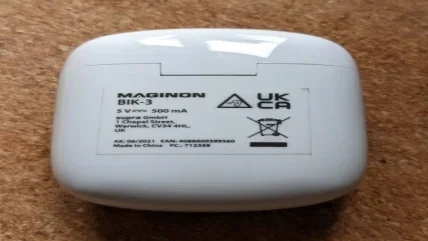
One of the consequences of Brexit is the progressive replacement of the ‘CE’ (Conformité Européenne) marking of products, indicating conformance with various design and manufacturing specifications, with ‘UKCA’ (UK Conformity Assessed) marks. Since at present the UK has adopted EU standards wholesale, this is in some senses a distinction without a difference, but there is always the possibility that rules may diverge in the future.
The Department for Business, Energy and Industrial Strategy (BEIS), the government department for business and enterprise, has been drafting rules for how products should be marked to give the necessary assurances to those who buy, hire or use relevant items. However, as we explained in a meeting with officials from the BEIS, there are some issues.
The rules require UKCA markings to be “clearly visible, legible and indelible” on every relevant piece of “machinery” in the scope of the Supply of Machinery (Safety) regulations of 2008. But ‘machinery’ doesn’t only mean large, powered mechanisms (on which there will almost always be somewhere that UKCA markings can be applied sensibly), but also the broader category of such things as ropes, chains, shackles and other accessories. Legislation tends to be written with complex mechanisms, rather than ancillary equipment, in mind, and this is the core of the issue.
We are not making a case around cost – although there may be cost implications – but about safety. Indelible marking on items such as forgings or castings may be at best impracticable (because they are hard to apply or impossible to view in use) or at worst pose an active risk: stamping or etching marks on a forging may introduce a starting point for a stress fracture, or a site where corrosion may take a hold, especially in environments such as the offshore oil and gas industry. In terms of safety, we suggest it would be better to allow UKCA conformance to be demonstrated in the ‘paperwork’ or its electronic equivalent.
The rules inherited from the EU allow this in some obvious cases: it is clearly not practicable individually to mark bulk reels of wire rope or drums of chain – the compliance certification relates to the reel from which the cable is taken.
There is an argument that ‘paperwork’ gets stuffed in a drawer and is never referred to again. However, on receipt of goods and at examination intervals documents need to be reviewed as a means of checking that equipment meets health and safety requirements and has not been modified or altered.
We have other concerns we have put to the BEIS. The sector uses products from many foreign companies that may not perform UKCA marking, leaving UK firms working abroad or re-exporting in a quandary – one that could be resolved if the conformance certification resides in the documentation rather than the physical product.
Many of the products we use or produce are too small or of too complex a shape to be marked with the logo. And the proposed alternatives, such as “permanently affixed” tags, fail at the first conception of how and in what environments lifting equipment is used – most of them are highly likely to end up as further plastic pollution, on land or at sea.
We have presented the case to the BEIS that, in some circumstances, allowing compliance to be demonstrated and verified through documentation rather than on the item would improve rather than reduce safety standards.
Documentation should be readily, and probably digitally, accessible to all those who need to know, without having to access the item itself, which may not be in a safely accessible location.
That there are also potential benefits in terms of cost and competitiveness for the UK’s domestic suppliers and manufacturers is undeniable, but that is not our main objective: it is all about the safe and secure deployment and use of lifting equipment.
The association is behind the new UK conformity requirements, but for some cast and forged products it is proving impracticable, and sometimes impossible, to apply the marking on the product. So we have been seeking a concession for the marking to continue on the documents after the deadlines.
We are pleased that the government has granted an extension to the deadlines to allow for such discussions and to give more time to adapt. For most lifting equipment products, UK conformity marking will be required by the end of 2024 but we can continue to put the UKCA mark on the documents until the end of 2027. We hope that during this period we will be granted a similar concession to that given currently to other products where it is difficult to directly apply the CE mark.






